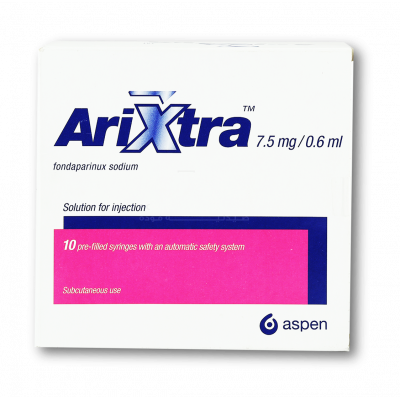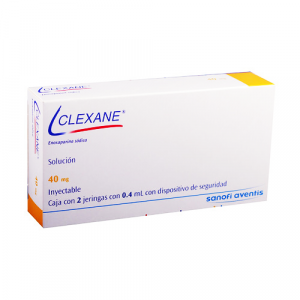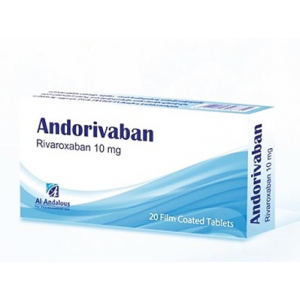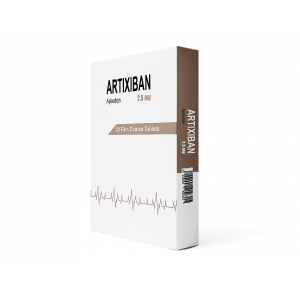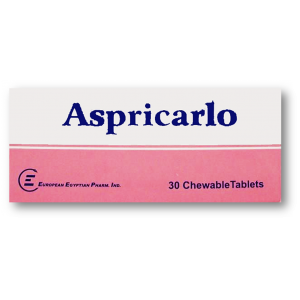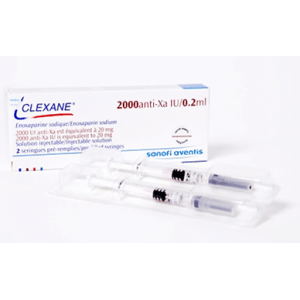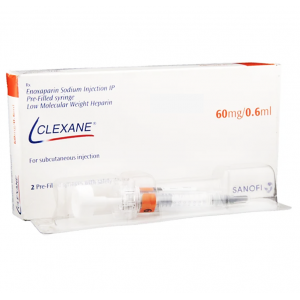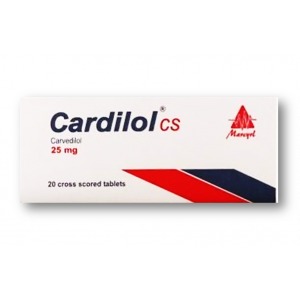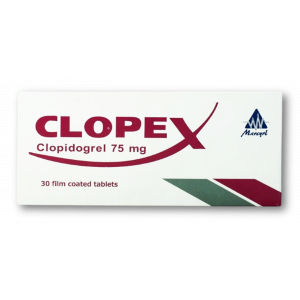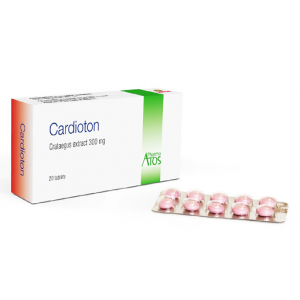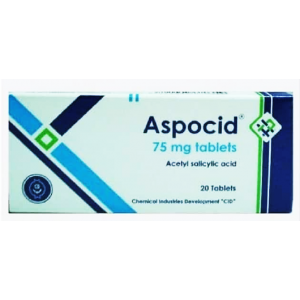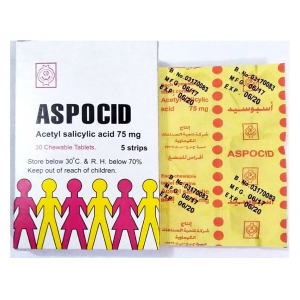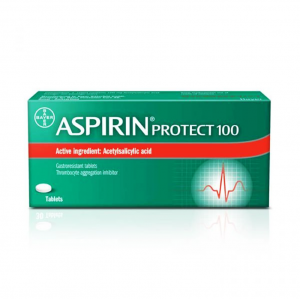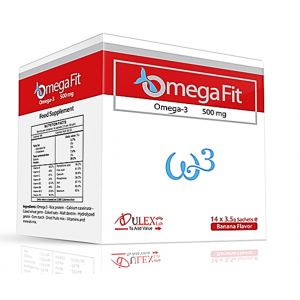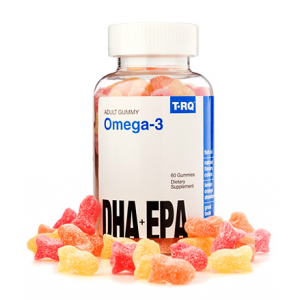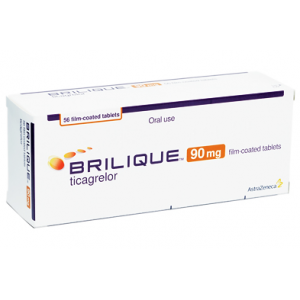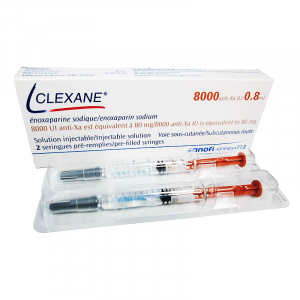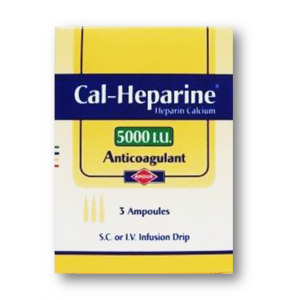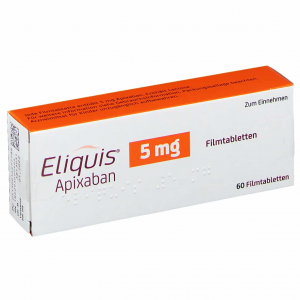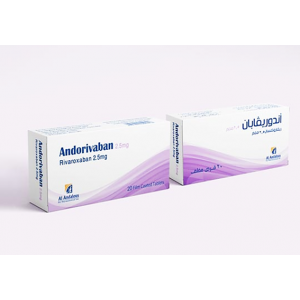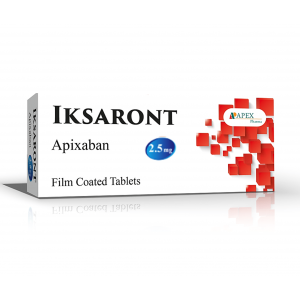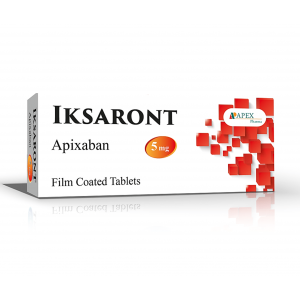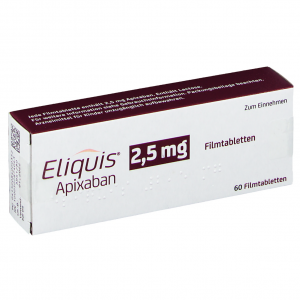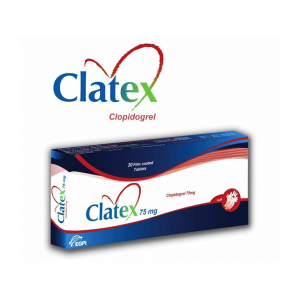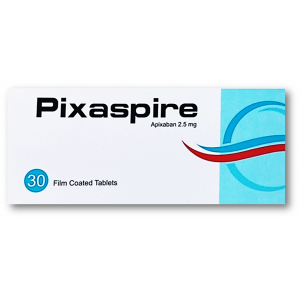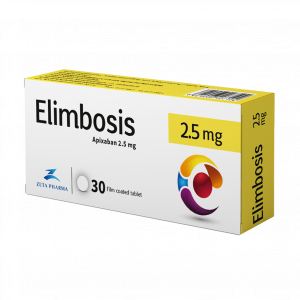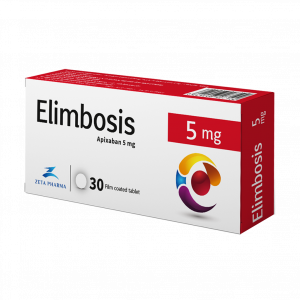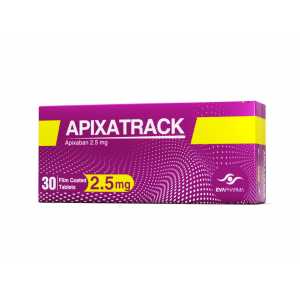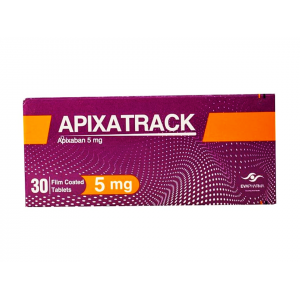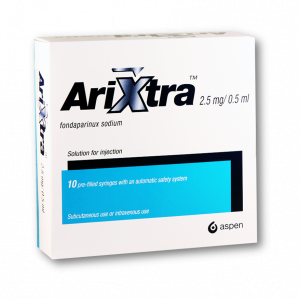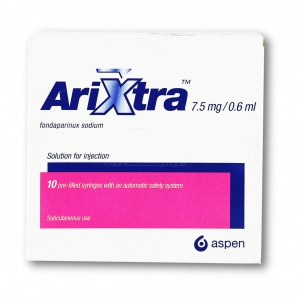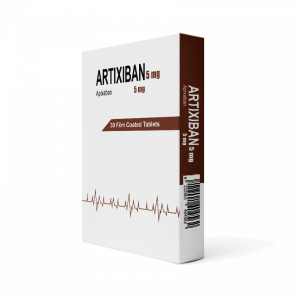- Anti-hestaminic & Respiratory Drugs (20)
- Anti-inflammatory Drugs (192) +-
- Baby & Mom (1319) +-
- Baby & Mom > Bath, skin & Hair > Skin Care > wibes (52)
- Beauty (2997) +-
- Beauty > Skin Care > whitening (295)
- Chemotherapy & Immune Response (882) +-
- Chemotherapy & Immune Response > ANTI-FUNGAL (11)
- Chemotherapy & Immune Response > Chemotherapeutic Agents > Hormone Antagonists >Enzyme Inhibitors (289)
- CIRCULATORY DISTURBANCE AGENTS (24)
- Diet & Fitness Products (280) +-
- DRUG AFFECTING CENTRAL NERVOUS SYSTEM (191)
- HEMATOLOGY (39)
-
Medical Supplies (503)
+-
- Chemicals & Disinfectants (19)
- Dental Supplies (31)
- Devices & Instruments (10)
- Diabetic Supplies (121)
- General Medical Supplies (21)
- I.V & Medical Solution (0)
- Intensive Care Unit & Anesthesia Supplies (0)
- KIDNEY UNIT SUPPLIES (21)
- Lab Supplies (3)
- Miscellaneous (21)
- Neonatal Unit Supplies (0)
- Operation Room Supplies (2)
- Sanitary (5)
- Sterilization Supplies (0)
- Surgical Sutures (4)
- Syringes (3)
-
Medicines & Health (2637)
+-
- Allergy & Sinus (95)
- Children's Health Care (54)
- Cough, Cold & Flu (277)
- Digestive Health & Nausea (225)
- Ear, Nose & Throat Care (179)
- Eye Care (117)
- Feminine Care (325)
- Foot Care (9)
- Orthopaedic Appliances (0)
- Pain Relief & Management (237)
- Pill Organizer (2)
- Skin Treatments (811)
- Sleep & Snoring Aids (2)
- Support & Braces (7)
- Medicines & health > Gout releif (42)
- Natural & Organic Products (81) +-
- OTC > Analgesics > Anti-inflammatory Drugs (44)
-
Personal Care (3252)
+-
- Bath & Body (271)
- Deodorant & Anti-perspirants (186)
- Ear, Nose & Throat Care (175)
- Eye Care (124)
- Feminine Care (374)
- Foot Care (17)
- Hair Care (472)
- Home Tests & Monitorings (14)
- Incontinence (7)
- Lip Care (22)
- Massage & Relaxation (17)
- Natural & Organic Personal Care (7)
- Oral Care (88)
- Pregnancy & Fertility (64)
- Shaving & Grooming (65)
- Sun Care (79)
-
Prescription Drugs (2877)
+-
- Analgesics (181)
- Cardiovascular System (374)
- Drugs Affecting Musculoskeletal System (65)
- Drugs Used In Infections (56)
- Ear & Nose Drugs (2)
- Endocrine System (176)
- Gastrointestinal Tract (242)
- Gastrointestinal Tract > Hepatology > Liver treatment (61)
- GYNECOLOGY (2)
- Miscellaneous (11)
- NEPHROLOGY > URINARY SYSTEM > RENAL DISORDERS > URINARY TRACT DISORDERS (46)
- NEUROLOGY (222)
- Nutrients & Blood Electrolytes (2)
- Respiratory System (154)
- SKIN > NAILS > HAIR > TOPICAL PREPARATIONS (75)
- Vaccines (1)
- Prescription drugs > Cardiovascular system > Anti-hypertension drugs (242)
- Sexual Wellness (301) +-
- Vitamins & Minerals Supplements (1197) +-
Ex Tax: 1,706EGP
Example
You can return the product within 14 days of purchase.
ReturnsYou can return the product within 14 days of purchase.

- Dosage Forms & Strengths
VTE Prophylaxis With History of HIT (Off-label)
Prophylaxis of deep vein thrombosis (DVT) in patient with history of heparin-induced thrombocytopenia (HIT) until patient can switch to warfarin
2.5 mg SC once daily for 5-10 days
American College of Chest Physicians (ACCP) guidelines assign low evidence rating to treatment of HIT with fondaparinux and conclude that further studies evaluating its role in HIT treatment are needed
- Administration:
Administer initial dose 6-8 hours after surgery, once hemostasis has been established
SC administration is deep, alternating right and left anterior and posterior abdominal walls
- Interactions:
Contraindicated (3):
apixaban
defibrotide
mifepristone
Serious - Use Alternative (63):
abciximab
amobarbital
anagrelide
antithrombin alfa
antithrombin III
argatroban
azithromycin
bazedoxifene/conjugated estrogens
bemiparin
betrixaban
bivalirudin
butabarbital
butalbital
caplacizumab
cefamandole
cefazolin
cefdinir
cefditoren
cefotetan
cefoxitin
cefpodoxime
ceftriaxone
cefuroxime
cilostazol
clarithromycin
clopidogrel
conjugated estrogens
dabigatran
dalteparin
dipyridamole
enoxaparin
eptifibatide
erythromycin base
erythromycin ethylsuccinate
erythromycin lactobionate
erythromycin stearate
estradiol
estrogens conjugated synthetic
estropipate
Factor X, human
heparin
levonorgestrel intrauterine
levonorgestrel oral
levothyroxine
liothyronine
mestranol
pentobarbital
phenindione
phenobarbital
primidone
protamine
quinine
rivaroxaban
roxithromycin
secobarbital
sulfadiazine
sulfamethoxazole
sulfisoxazole
thyroid desiccated
tibolone
ticlopidine
tirofiban
warfarin
Monitor Closely (121):
aceclofenac
acemetacin
agrimony
alfalfa
alteplase
American ginseng
anamu
aspirin
aspirin rectal
aspirin/citric acid/sodium bicarbonate
azapropazone
azathioprine
azficel-T
budesonide
capecitabine
carbamazepine
celecoxib
chitosan
choline magnesium trisalicylate
cinnamon
citalopram
collagenase clostridium histolyticum
conjugated estrogens, vaginal
cordyceps
cornsilk
cortisone
cyclophosphamide
danshen
deferasirox
deflazacort
devil's claw
dexamethasone
dichlorphenamide
diclofenac
diflunisal
dong quai
epoprostenol
escitalopram
ethanol
ethotoin
etodolac
fenbufen
fennel
fenoprofen
feverfew
fish oil
fish oil triglycerides
fludrocortisone
fluorouracil
fluoxetine
flurbiprofen
fluvoxamine
forskolin
fosphenytoin
garlic
gemcitabine
ginger
ginkgo biloba
glucagon intranasal
green tea
hemin
horse chestnut seed
hydrocortisone
ibrutinib
ibuprofen
ibuprofen IV
icosapent
indomethacin
iodine (radioactive)
ketoprofen
ketorolac
ketorolac intranasal
lofepramine
lornoxicam
meclofenamate
mefenamic acid
melatonin
meloxicam
methimazole
methylprednisolone
mistletoe
nabumetone
naproxen
nettle
omega 3 carboxylic acids
omega 3 fatty acids
oxaprozin
panax ginseng
parecoxib
paroxetine
pau d'arco
pegaspargase
phenytoin
phytoestrogens
piroxicam
porfimer
prasugrel
prednisolone
prednisone
propafenone
propylthiouracil
reishi
reteplase
rifabutin
salicylates (non-asa)
salsalate
saw palmetto
sertraline
Siberian ginseng
sulfasalazine
sulindac
tenecteplase
ticagrelor
tipranavir
tolfenamic acid
tolmetin
triamcinolone acetonide injectable suspension
triclofos
vorapaxar
vortioxetine
zanubrutinib
Minor (18):
acetaminophen
acetaminophen IV
acetaminophen rectal
alprostadil intracavernous/urethral
ceftaroline
chlorella
demeclocycline
dexmethylphenidate
doxycycline
glyburide
mineral oil
minocycline
oxytetracycline
quinidine
serdexmethylphenidate/dexmethylphenidate
tetracycline
verteporfin
vitamin E
Adverse Effects:
>10%
Anemia (1-20%)
Fever (4-14%)
Nausea (3-11%)
1-10%
Rash (7.5%)
Dizziness (4%)
Confusion (3%)
Constipation (5-9%)
Diarrhea (2-3%)
Edema (9%)
Headache (2-5%)
Hypokalemia (1-4%)
Hypotension (4%)
Insomnia (4-5%)
Purpura (4%)
Thrombocytopenia (3%)
Urinary retention (3%)
Urinary tract infection (2-4%)
Vomiting (1-6%)
Postmarketing Reports
Thrombocytopenia with thrombosis that manifested similarly to HIT
Serious allergic reactions, including angioedema and anaphylactoid or anaphylactic reactions
Spinal or epidural hematomas
Hemorrhage
Increase in bleeding risk with renal impairment
Increase in bleeding risk with body weight <50 Kg
Increase in aminotransferase levels
Warnings:
|
Black Box Warnings These hematomas may result in long-term or permanent paralysis Patients should be frequently monitored for signs and symptoms of neurologic impairment If neurologic compromise is noted, urgent treatment is necessary Physicians should weigh benefits against risk before embarking on neuraxial intervention in patients anticoagulated or scheduled to be anticoagulated for thromboprophylaxis Optimal timing between the administration of LMWHs and neuraxial procedures is not known Factors increasing risk of epidural or spinal hematomas |
Contraindications:
Severe renal impairment (CrCl <30 mL/min)
Body weight <50 kg (venous thromboembolism prophylaxis only)
Active major bleeding
Bacterial endocarditis
Thrombocytopenia with antiplatelet antibody in presence of fondaparinux
History of serious hypersensitivity reaction (eg, angioedema, anaphylactoid or anaphylactic reactions)
Cautions:
Use with caution in the elderly (prolonged half-life in patients >75 years of age), peptic ulcer disease, bleeding disorder, recent stroke, recent surgery (brain, spinal cord, or eye), concurrent use of platelet inhibitors or anticoagulants, moderate renal impairment (CrCl 30-50 mL/min); may cause prolonged anticoagulation in patients with CrCl 30 to 50 mL/min
Discontinue if platelets <100,000/μL
Not for IM administration
Therapy increases risk of hemorrhage in patients at risk for bleeding, including conditions such as congenital or acquired bleeding disorders, active ulcerative and angiodysplastic gastrointestinal disease, hemorrhagic stroke, uncontrolled arterial hypertension, diabetic retinopathy, or shortly after brain, spinal, or ophthalmological surgery; cases of elevated aPTT temporally associated with bleeding events have been reported following administration of drug (with or without concomitant administration of other anticoagulants); do not administer agents that enhance risk of hemorrhage unless essential for management of underlying condition, such as vitamin K antagonists for treatment of VTE; if co-administration is essential, closely monitor patients for signs and symptoms of bleeding
Do not use interchangeably with heparin or LMWHs
Thrombocytopenia with thrombosis reported with use; discontinue therapy if platelet count falls below 100,000/mm³
Risk of spinal or epidural hematomas if spinal puncture occurs (see Black Box Warnings)
Do not administer initial dose earlier than 6- 8 hours after surgery; administration earlier than 6 hours after surgery increases risk of major bleeding
Increased risk of bleeding in patients <50 kg; dosage reduction recommended
Not for administration as prophylactic for patients undergoing hip fracture, hip replacement, or knee replacement surgery and abdominal surgery
Pregnancy & Lactation:
Pregnancy
Available data from published literature and postmarketing reports have not reported clear association with adverse developmental outcomes; fondaparinux sodium plasma concentrations obtained from four women treated during pregnancy and their newborn infants demonstrated low placental transfer of fondaparinux sodium; there are risks to mother associated with untreated venous thromboembolism in pregnancy and a risk of hemorrhage in the mother and fetus associated with use of anticoagulants
Pregnancy confers an increased risk for thromboembolism that is higher for women with underlying thromboembolic disease and certain high-risk pregnancy conditions; published data describe that women with a previous history of venous thrombosis are at high risk for recurrence during pregnancy
- Fetal/neonatal adverse reactions
Drug has been demonstrated to cross placenta in humans; use of anticoagulants, may increase risk of bleeding in the fetus and neonate; monitor neonates for bleeding
- Labor or delivery
All patients receiving anticoagulants, including pregnant women, are at risk for bleeding; use during labor or delivery in women who are receiving neuraxial anesthesia may result in epidural or spinal hematomas; pregnant women receiving therapy should be carefully monitored for evidence of bleeding or unexpected changes in coagulation parameters; consideration for use of a shorter acting anticoagulant should be specifically addressed as delivery approaches
Lactation
There are no data on presence in human milk, or effects on milk production; limited clinical data during lactation preclude a clear determination of risk of therapy to an infant during lactation; therefore, developmental and health benefits of breastfeeding should be considered along with mother’s clinical need for therapy and any potential adverse effects on breastfed infant from therapy or from underlying maternal condition
Pregnancy Categories
A: Generally acceptable. Controlled studies in pregnant women show no evidence of fetal risk.
B: May be acceptable. Either animal studies show no risk but human studies not available or animal studies showed minor risks and human studies done and showed no risk.
C: Use with caution if benefits outweigh risks. Animal studies show risk and human studies not available or neither animal nor human studies done.
D: Use in LIFE-THREATENING emergencies when no safer drug available. Positive evidence of human fetal risk.
X: Do not use in pregnancy. Risks involved outweigh potential benefits. Safer alternatives exist.
NA: Information not available.
Pharmacology:
Mechanism of Action
Antithrombotic agent; inhibits factor Xa, which interrupts blood coagulation cascade and inhibits thrombin formation and thrombus development; generally does not increase prothrombin time (PT) or partial thromboplastin time (PTT)
Absorption
Bioavailability: 100%
Peak plasma time: 2-3 hr
Peak plasma concentration: 0.34-0.50 mg/L
Distribution
Protein bound: 94% (antithrombin III)
Vd: 7-11 L
Metabolism
Not established
Elimination
Half-life: 17-21 hr
Dialyzable: Yes
Excretion: Urine
Write a review
Your Name:Your Review: Note: HTML is not translated!
Rating: Bad Good
Enter the code in the box below:

